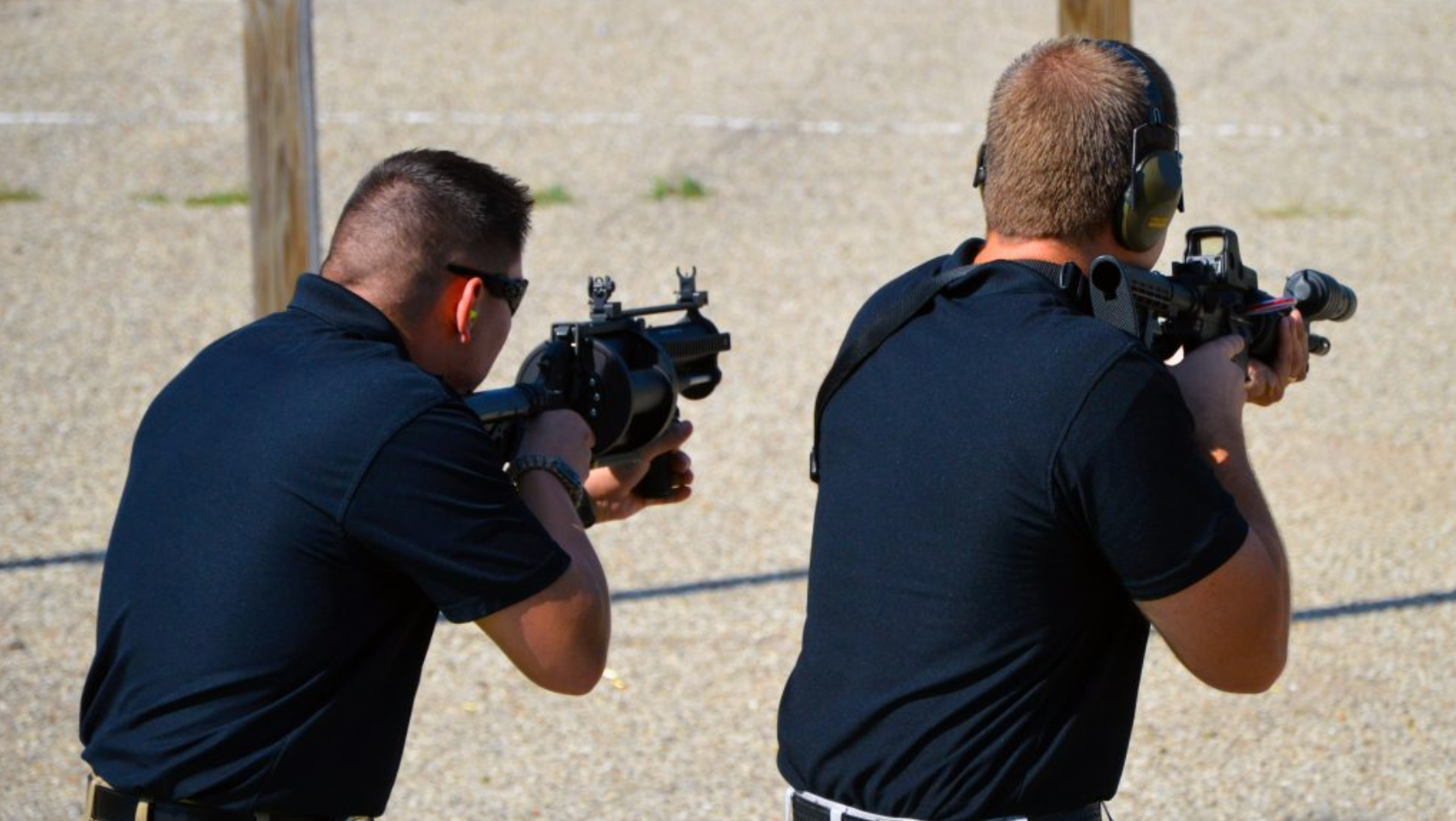 By JAMES BELL
By JAMES BELL
Hays Post
Last week, the Hays Police Department completed training with a new weapon that soon will be deployed, expanding the department’s arsenal and helping increase the range of less-lethal weapons currently used by the department.
“Through the department’s history, we have evolved as needed,” said HPD Detective J.B. Burkholder. “We have seen the need for a larger tool belt and have more options as to how to solve a problem with the least amount of force possible. In doing that, we have slowly graduated and gotten pepper spray, obtained batons, which is an impact weapon, and we have obtained Tasers. That has assisted us in solving problems without having to use a lot of force, and hopefully not lethal force.”
The weapons give officers another option in using less-lethal force with increased range and accuracy over existing options.
“It’s just something else in that ladder if you want to call it that, from where we can try these different things if we have time and the situation dictates, that we can try to solve the problem without causing injury to people,” Burkholder said. “So the 40 mm program came into play.”
The Special Situational Response Team has used a 37mm launcher for a number of years, but the new weapon has considerably improved accuracy, mostly due to the rifling in the barrel.
“Once you start using rifling, the accuracy improves dramatically,” Burkholder said. “With the 40 mm, we are able to deliver an impact munition at a greater range, which allows officers to keep distance from a threat, keeping ourselves and others safe.”
The effective range of the weapon is 5 to 131 feet, where the currently available bean bag round is only 20 to 75 feet Burkholder said.
“That distance is what we are looking for,” he said.
The goal of the weapon is to create a moment of pause in action when dealing with a subject trying to do harm to others.
“We want that person to have to think about, the pain stimulus, where they get hit with that impact projectile and they have to pause and decide whether or not they want to continue with the fight or if they want to start complying with the officers’ orders,” Burkholder said.

That pause allows officers to move in for an arrest safely.
Two types of ammunition will be deployed with the weapon for regular patrols that are intended for use on a subject – a softer foam round designed to create a pain response, and a slightly harder round that includes an OC component, more commonly known as pepper spray.
Both rounds are designed to be aimed away from the head or upper chest and do minimal damage to a subject, unlike a traditional firearm where the goal is to hit a target center mass.
“It allows the officer to hit the subject in a large muscle mass, where the injury is hopefully going to be limited to bruising or they may have small cuts and lacerations,” Burkholder said.
The foam rounds absorb energy from the impact, causing pain, with injuries generally limited to bruising at the impact site.
The OC rounds add another level of pain after the initial impact, giving an even greater chance the subject will comply.
“Once that round impacts the target, you will have that pain compliance and then they will also have to deal with the effects of the OC,” Burkholder said.
The OC affects respiration and causes inflation of the mucous membranes and skin irritation.
While the weapon increases the range of the department’s less-lethal options, Burkholder warns, if necessary the weapon can inflict lethal damage if an officer is forced to use the weapon differently than designed.
“With all of these weapons, When you start talking about less-lethal impact rounds … it’s not non-lethal, it’s less-lethal,” he said.
With training being completed last week, the weapon will be put into service in the near future.
“I don’t have an exact date, but it will be available to officers sooner rather than later,” Burkholder said.
The main goal of the weapon, Burkholder said, is increased safety and gives another option to officers before the use of deadly force.
“Our hope is that it is never used. Our hope is that we never have a situation where we need to use this, but it is another weapon in our tool belt where we can come up with a solution to a problem before using our firearm.”


